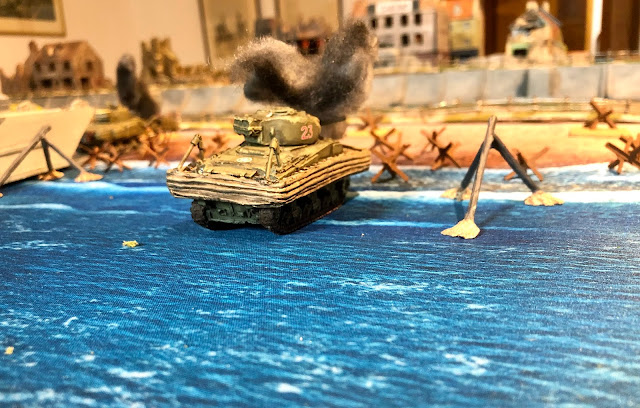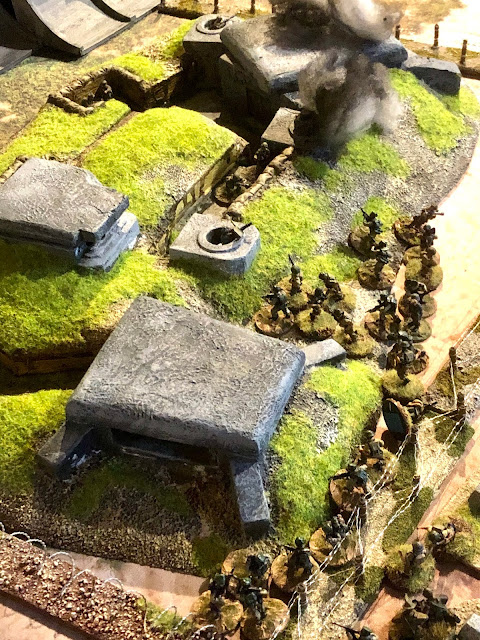Sword Beach Reloaded Rapid Fire
Due to Covid we thought we would have no Holidays this year, a fellow wargamer and saviour came along, Paul and Stella offering us to holiday with then down south in the Massif Central on the edge of the Alps. Paul and I have similar collections in the same scales 28mm Napoleonic, Ancients and 20mm WW2 and use the same rules, I guess we have chatted on forums over the last 15 years or so, but had never met face to face.
I think Paul’s collection of 28mm Napoleonic collection eclipses mine by quite a lot and you will find him regularly posting on General de Brigade and Rapid Fire forums. We decided to conduct a Sword Beach game using the Rapid Fire rules from the D-Day scenario book. Paul has a huge collection of ships, including large destroyers down to the landing craft and support ships, and a lovely table set up for D-day landing scenarios plus the specific funnies for the landing along with the Sherman DD tanks, and the normal French villages etc.
I elected to be the attacking Brits and Paul the defending Germans. The scenario calls for the capture and destruction of three of the bunkers and hard points along the beach plus one inland, a very tough ask.
the start line!
The initial landings go bad with a lot of the leading tanks hitting land mines and either destroyed or heavy damaged.
some of the landing craft are also hit with artillery on the way in
another heavy damage.......the story of the game for me lots of 1s and 2s rolled
half of the DD tanks made it ashore only to be brewed up by the AT guns
A second vehicle pushes pas the first only to hit another mine!
I managed to get all of my landing craft ashore unscathed but the unloading of the funnies was problematic with each one hitting a mine and being disabled or hit while still on the boats in the counter battery artillery fire. In the end only one made it up the beach. The Shermans wading ashore three were swamped and three made it ashore, all either getting taken out by mines or AT fire not a good start!
Next turn Paul makes sure of the funnies destroying the heavy damaged ones with AT fire......it was one of those days.........
the infantry make it ashore relatively unscathed
On the left I land two companies to take on the left bunker complex
On the right another two companies, these guys do get cut up a little in the crossfire
The infantry stormed ashore and surprising took very light casualties, however the remaining tanks were all knocked out except one which i leave covered by the other two tanks and await support
more infantry reinforce the right, plus some support elements arrive including the naval landing party arty observors
Again I lose the supporting tanks to mines!
but the infantry clear the trenches and with grenades destroy most of the hard positions by the 5th turn on the right
murder in the centre, most of two companies are cut down by MG and artillery fire, I managed to get one tank forward with a bridge alsmost making the wall.....
landing party is ashore finally radio contact and shelling begins....although very few targets
Finally on the left the commandos arrive in force to take on their objective
the commandoes make short work of the position, fabulous grenade work again clears the way
meanwhile a patrol boat moves in for close fire support

Finally we clear the right, at this stage we call it a draw, I am in control of the beach, but failed to have enough turns to capture the inland bunkers, still a good game, we nearly restarted in the fifth turn as I had lost all of my armour by then except one vehicle........a great time never the less.
I have never really been a fan of actual landing games, but really enjoyed this, it really was a spectacle. Paul is planning a visit to mine place in the spring to play either on my Pegasus Bridge table or Arnhem...or something else we shall see!
cheers
Matt





























































